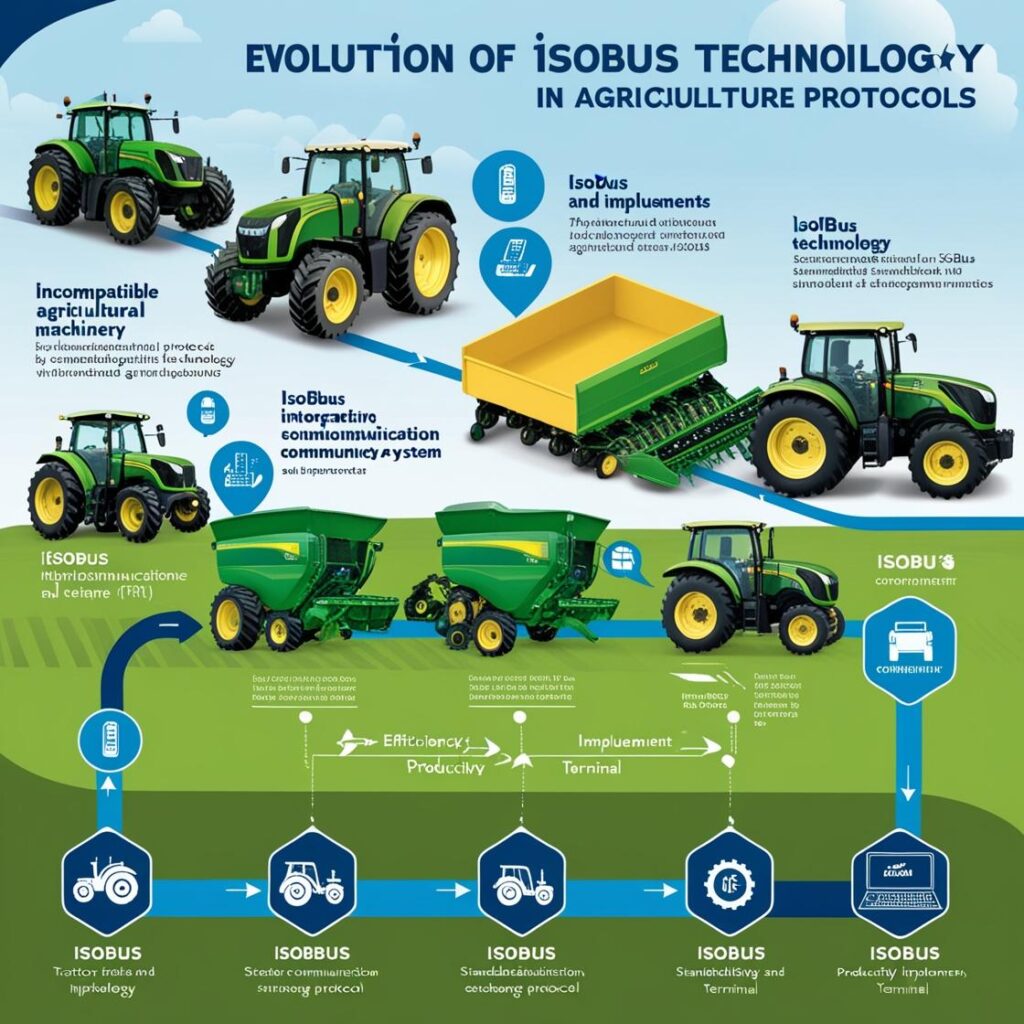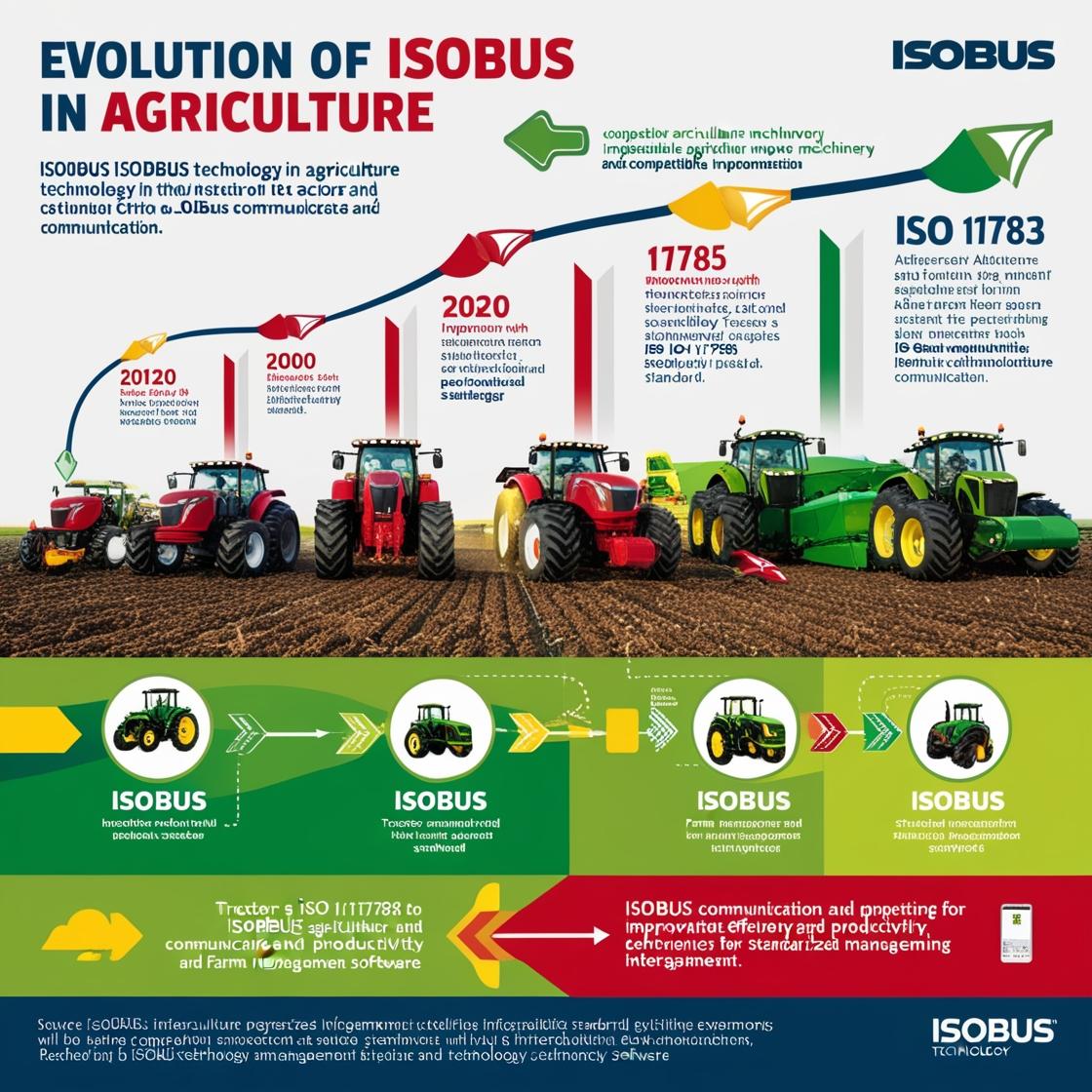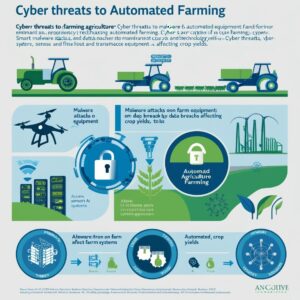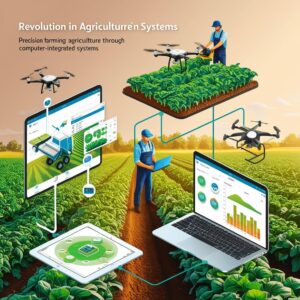Introduction: In today’s fast-paced farming world, smooth communication between tractors, implements, and terminals is essential for efficiency and productivity. This is where ISOBUS comes into play. If you’ve ever been frustrated by machines from different manufacturers not “talking” to each other, ISOBUS is the solution. Let’s break down how it works, why it matters, and what steps are being taken to ensure compatibility across the board.
What is ISOBUS?
ISOBUS is like the common language of the agricultural world. Imagine you could plug any tractor into any implement, and everything would just work seamlessly—this is the dream ISOBUS is making real. It’s based on the ISO 11783 standard, a set of rules developed to allow communication between tractors, implements, and farm management software using a standardized system. However, while the theory sounds fantastic, the reality isn’t always perfect. Not all machines communicate properly due to different interpretations of this complex standard.
That’s where the Agricultural Industry Electronics Foundation (AEF) comes in. Founded in 2008, AEF aims to create smooth cross-manufacturer compatibility by establishing extra guidelines and developing certification tests for products.
The Birth of ISOBUS: A Short History
ISOBUS was born out of necessity. Before the early 2000s, manufacturers had their own proprietary solutions, leading to a lot of incompatibility. Even when ISOBUS was introduced, it didn’t hit the ground running. The standard left too much room for interpretation, and many manufacturers developed their own versions, creating confusion for farmers and dealers.
By 2008, AEF stepped in, and they’ve been working on improving transparency and compatibility ever since. Now, with the help of AEF’s conformance tests and databases, you can easily see which machines work together before making a purchase.
How Does ISOBUS Work?
At its core, ISOBUS is a CAN bus technology-based network. Let’s break down the key components in a modern ISOBUS system:
- Tractor Electronic Control Unit (TECU): This is the “brain” of the tractor, sending vital information like speed and power to other connected devices.
- Universal Terminal (UT): This allows any implement to be controlled by a single terminal, regardless of the manufacturer.
- Task Controller (TC): The Task Controller manages operations and jobs, such as seed planting or fertilizer spreading, by communicating with farm management software. It even controls specific sections of equipment automatically through Section Control (TC-SC).
- Tractor Implement Management (TIM): Unlike standard ISOBUS systems where the tractor controls the implement, TIM allows the implement to control certain tractor functions, such as forward speed or valve operation.
Key ISOBUS Functionalities
For farmers, understanding ISOBUS functionality is essential. Here are a few key ones to know:
- Universal Terminal (UT): The UT is a game-changer. It allows one terminal to control multiple machines, reducing clutter in the cabin and making operation simpler.
- Auxiliary Controls (AUX): This feature allows for additional control elements like joysticks. There are two types—AUX-O (older) and AUX-N (newer)—but they aren’t compatible with each other.
- Task Controller (TC): The TC comes in three flavors—basic, geo-based, and Section Control—depending on how advanced your needs are. For example, with TC-SC, you can automate processes like turning off sections of a sprayer when overlap occurs.
- TIM (Tractor Implement Management): TIM allows bi-directional communication, meaning the implement can control the tractor for maximum efficiency. This reduces operator fatigue and boosts productivity by letting the machine make key decisions.
Ensuring Compatibility with AEF Certification







So, how do you know if the machines you want to purchase will actually work together? That’s where the AEF Conformance Test comes in. It’s a rigorous process to certify that ISOBUS products meet both the ISO 11783 standard and AEF guidelines. Once certified, manufacturers can label their equipment as ISOBUS compatible, and you can check compatibility in the AEF ISOBUS Database.
Here’s how this helps you:
- Guaranteed compatibility: No more guessing if your tractor and implement will play nice together.
- Transparency: The database makes it easy to check functionalities and compatibility.
- Improved reliability: Certified products reduce downtime and make troubleshooting easier.
Actionable Tips for Farmers and Dealers:
- Always check compatibility in the AEF ISOBUS Database before purchasing new machinery to ensure it will work with your existing equipment.
- Look for the AEF Certified Label on products to guarantee they’ve passed the conformance test.
- Understand the functionalities you need—whether it’s Section Control, TIM, or Universal Terminal—so you buy equipment that meets your farming needs.
- Make use of the Task Controller for better job management and increased accuracy in applications like spraying or fertilizing.
Summary for Instagram Reels and Canva Infographics:
- ISOBUS is the universal language for farm machinery: It allows tractors and implements to communicate effortlessly, saving time and money.
- AEF ensures compatibility: Look for the AEF Certified Label and check the ISOBUS database to avoid costly mismatches.
- Key components of ISOBUS: TECU, Universal Terminal, Task Controller, and TIM are critical to streamlining your operations.
- Make farming smarter with ISOBUS: Use Section Control, TIM, and other functionalities for precision and efficiency.

This is how ISOBUS is revolutionizing modern farming—making your life easier, your operations smoother, and your farm more efficient.
The AEF (Agricultural Industry Electronics Foundation) Plugfest is a biannual event dedicated to testing and refining the ISO 11783 standard, commonly known as ISOBUS, which enables communication between agricultural equipment like tractors and implements from different manufacturers. ISOBUS aims to standardize these communication systems, but variations in interpretation by manufacturers can lead to incompatibility issues. Plugfests provide an opportunity for engineers from different companies to connect their products and test their compatibility in real-world scenarios.
At Plugfests, engineers can see if their ISOBUS-based products—such as displays, implements, or other devices—can communicate with each other seamlessly. This helps both established companies and newcomers to the market refine their products before they are released to farmers. Feedback from these events provides valuable insights into improving ISOBUS functionality, ensuring smoother product interoperability.

High-Speed ISOBUS (HSI)
The AEF is also focused on future ISOBUS developments, including the creation of High-Speed ISOBUS (HSI). HSI is designed to handle the increasing demand for faster data transmission in precision agriculture, enabling real-time control of farm implements and enhancing data logging, such as yield mapping. These developments would allow operators to control machinery with much higher accuracy, improve diagnostics, and enable remote software updates. HSI will also play a role in more advanced automation, where faster communication and response times are crucial.
Wireless In-field Communication (WIC)
In addition to HSI, Wireless In-field Communication (WIC) is another area of focus, allowing data exchange between multiple machines operating in the same field. WIC will help synchronize tasks across machines, enable remote control, and even contribute to road safety by integrating with Cooperative Intelligent Transport Systems (C-ITS). This technology is particularly valuable in multi-machine operations like platooning or transferring field coverage data between devices.
Both HSI and WIC are essential for supporting the increasing demands of Agriculture 4.0, where digitalization, automation, and connectivity are transforming farming practices.
About Us
Welcome to Agriculture Novel, your go-to source for in-depth information and insights into the world of agriculture, hydroponics, and sustainable farming. Our mission is to educate, inspire, and empower a new generation of farmers, hobbyists, and eco-conscious enthusiasts. Whether you’re interested in traditional farming practices or modern innovations, we aim to provide comprehensive guides, expert tips, and the latest updates in agriculture and urban farming.
At Agriculture Novel, we believe in the power of knowledge to transform the way we grow, sustain, and nourish our world. Explore our articles on topics like Fruit Growing Guide, Hydroponics, Plant Deficiency Guide, and more.
Thank you for joining us on this journey towards a greener, more sustainable future!
About Agronique Horizon
At Agronique Horizon, we specialize in delivering comprehensive digital marketing and web development solutions tailored for the agriculture and hydroponics industries. From custom website design and app development to social media management, we provide end-to-end support for brands aiming to make a meaningful impact. Our team also offers innovative solutions for the real estate sector, bringing precision and visibility to your projects. Learn more about our services here and discover how we can elevate your digital presence.




